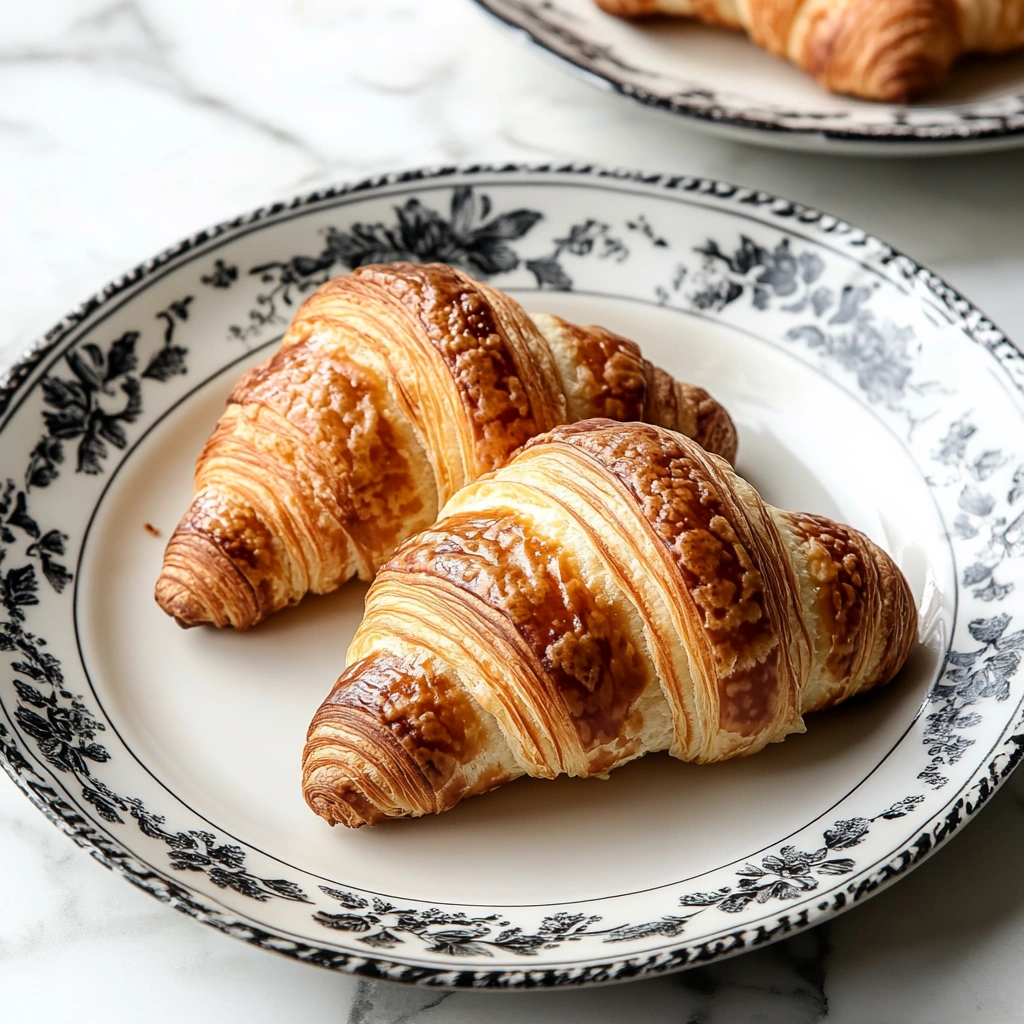If you’ve ever bitten into a croissant (and let’s face it, who hasn’t?), you know it’s not just a pastry—it’s an experience. That flaky, buttery texture paired with the golden crust? Pure magic. But have you ever stopped mid-bite to wonder: What Are the Ingredients in a Croissant? What makes it this good?
Well, my friend, you’re in for a treat. I’m going to walk you through every single ingredient that makes up this iconic French pastry. By the end, you might just want to whip up a batch yourself—though fair warning, it’s a bit of a labor of love.
Table of Contents
Table of Contents
The Building Blocks of a Perfect Croissant
At its core, a croissant is made with just a handful of simple ingredients. But don’t let that fool you. It’s how these ingredients work together (and the technique) that turns a basic dough into a masterpiece. Let’s break it down:
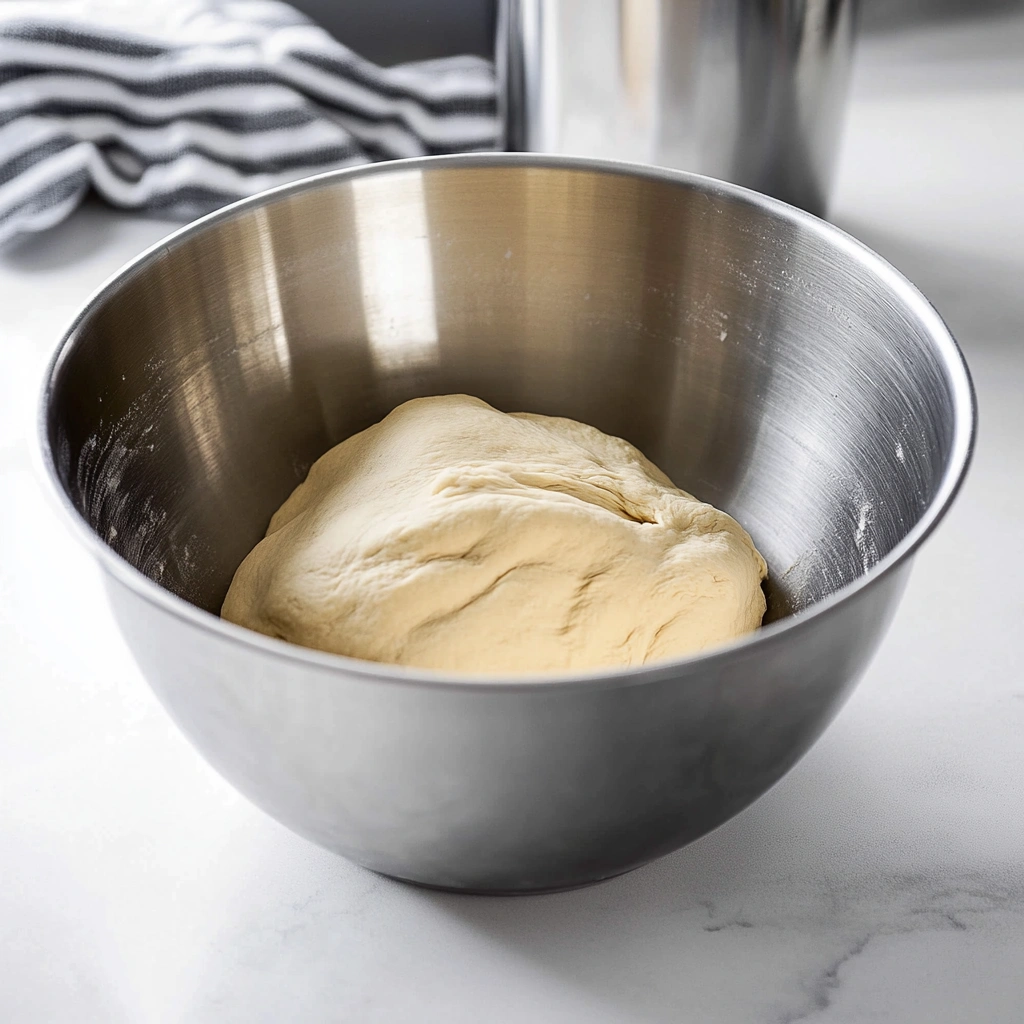
1. Flour
Flour is the backbone of any dough, and croissants are no exception. The type of flour you use matters—a lot. Most bakers swear by all-purpose or bread flour for croissants because they have the right balance of protein to create structure without being too tough.
Why It’s Important:
The protein in flour helps develop gluten, which gives the croissant its chew and structure. Too much, though, and you’ll end up with something more like a dinner roll than a croissant.
Pro Tip:
If you’re making croissants at home, look for flour with a protein content of around 10–12%. Anything lower, and your dough might not hold up to the layers of butter.
2. Butter (Lots of It!)
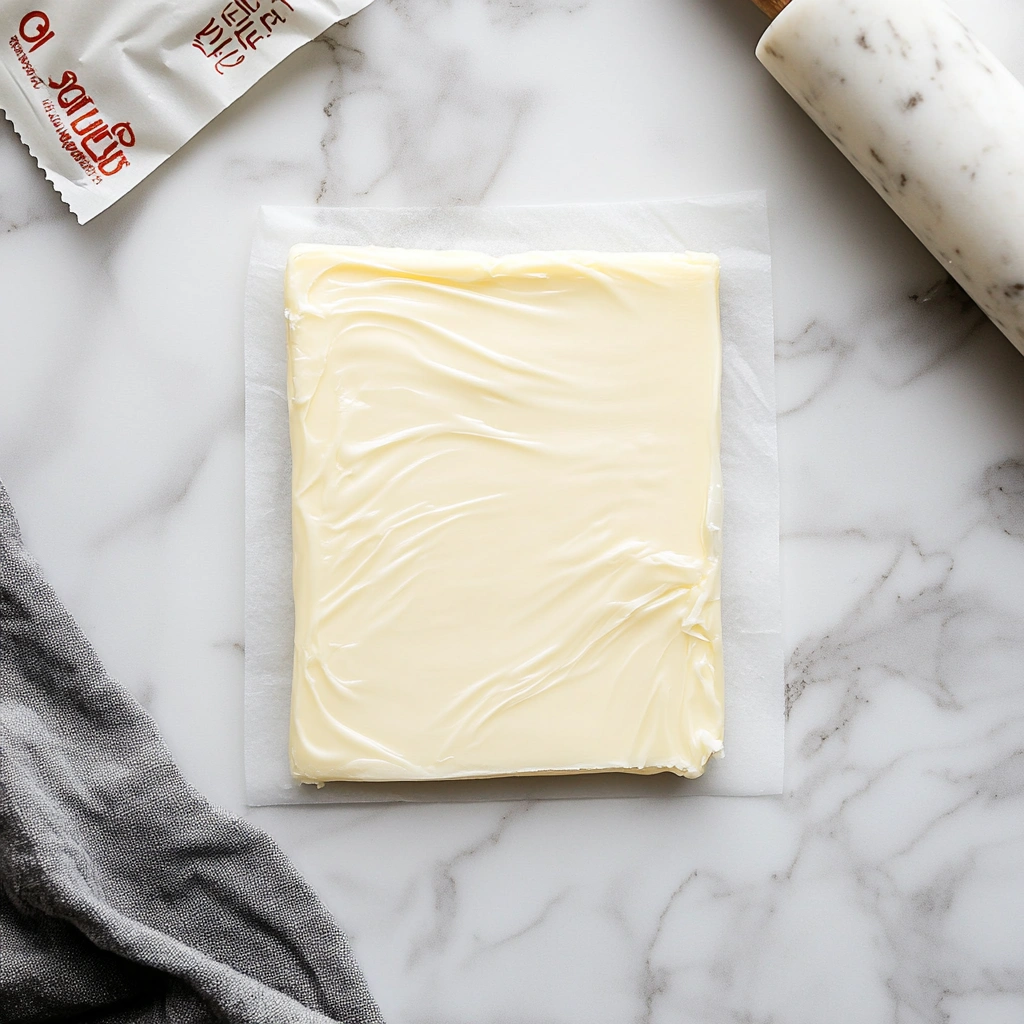
Ah, butter—the soul of the croissant. Butter is what gives croissants their rich flavor and those delicate, flaky layers. And let’s be real, croissants are basically butter delivery systems, right?
Why It’s Important:
Butter gets laminated into the dough in thin, even layers. When the croissant bakes, the water in the butter creates steam, which puffs up those layers. This is where all that flakiness comes from.
Pro Tip:
Use high-quality, unsalted butter with at least 82% fat content. The higher fat makes it easier to laminate, and it tastes better, too. European-style butter is perfect for this.
3. Yeast
Yeast is the magic ingredient that gives the dough its rise and airy texture. Without yeast, you’d have a flat, dense pastry—and no one wants that.
Why It’s Important:
Yeast ferments the sugars in the dough, producing carbon dioxide. This gas gets trapped in the dough, creating those light, airy layers you love.
Pro Tip:
Use active dry or instant yeast. If you’re a beginner, instant yeast is more forgiving because you don’t need to activate it in water first.
4. Milk
Milk adds richness to the dough and helps keep it tender. It also contributes to that golden-brown crust we all drool over.
Why It’s Important:
Milk brings a subtle sweetness and extra fat to the dough, making it softer and more flavorful than water-based dough.
Pro Tip:
Use whole milk for the best results. Skim milk might save you a few calories, but it won’t deliver the same richness.
5. Sugar
While croissants aren’t super sweet, a little sugar in the dough balances the flavors and helps with browning.
Why It’s Important:
Sugar feeds the yeast during fermentation, giving your dough a better rise. Plus, it enhances the overall flavor.
Pro Tip:
Stick with granulated sugar—just a tablespoon or two is enough.
6. Salt
Salt might not seem glamorous, but it’s a game-changer in baking. It enhances the flavors of the other ingredients and keeps the yeast in check.
Why It’s Important:
Without salt, your croissants would taste flat and dull. It also strengthens the gluten structure, making the dough easier to work with.
Pro Tip:
Be precise when measuring salt—too much, and you’ll kill the yeast.
7. Water
Some recipes use a mix of water and milk, but water on its own is just as essential. It hydrates the dough and helps dissolve the other ingredients.
Why It’s Important:
Water activates the yeast and helps create steam during baking, which contributes to those flaky layers.
Pro Tip:
Use room-temperature water for the best results. Cold water can slow down yeast activity, while hot water might kill it.
Step-by-Step: How to Make Croissants from Scratch
Making croissants is a labor of love. If you’ve ever wondered what are the ingredients in a croissant, this guide will show you how they come together. The process is all about patience and precision, so don’t rush it. Here’s a step-by-step guide to help you tackle the project like a pro.
If you’re looking for a similar treat, check out this Gipfeli recipe for a Swiss twist on croissants!
Step 1: Make the Dough
Start by making the base dough, also called détrempe in French.
- Activate the Yeast: If using active dry yeast, mix it with warm milk (about 100°F) and 1 tablespoon of sugar. Let it sit for 5–10 minutes until it’s foamy. (If you’re using instant yeast, you can skip this step.)
- Combine Wet Ingredients: Mix the milk (or yeast mixture), water, and melted butter in a bowl.
- Mix Dry Ingredients: In a large bowl, combine the flour, remaining sugar, and salt.
- Form the Dough: Slowly add the wet ingredients to the dry ingredients. Mix until a shaggy dough forms.
- Knead the Dough: Knead for 5–7 minutes until smooth and elastic. You can do this by hand or with a stand mixer.
- Chill: Wrap the dough in plastic wrap and refrigerate for at least 1 hour.
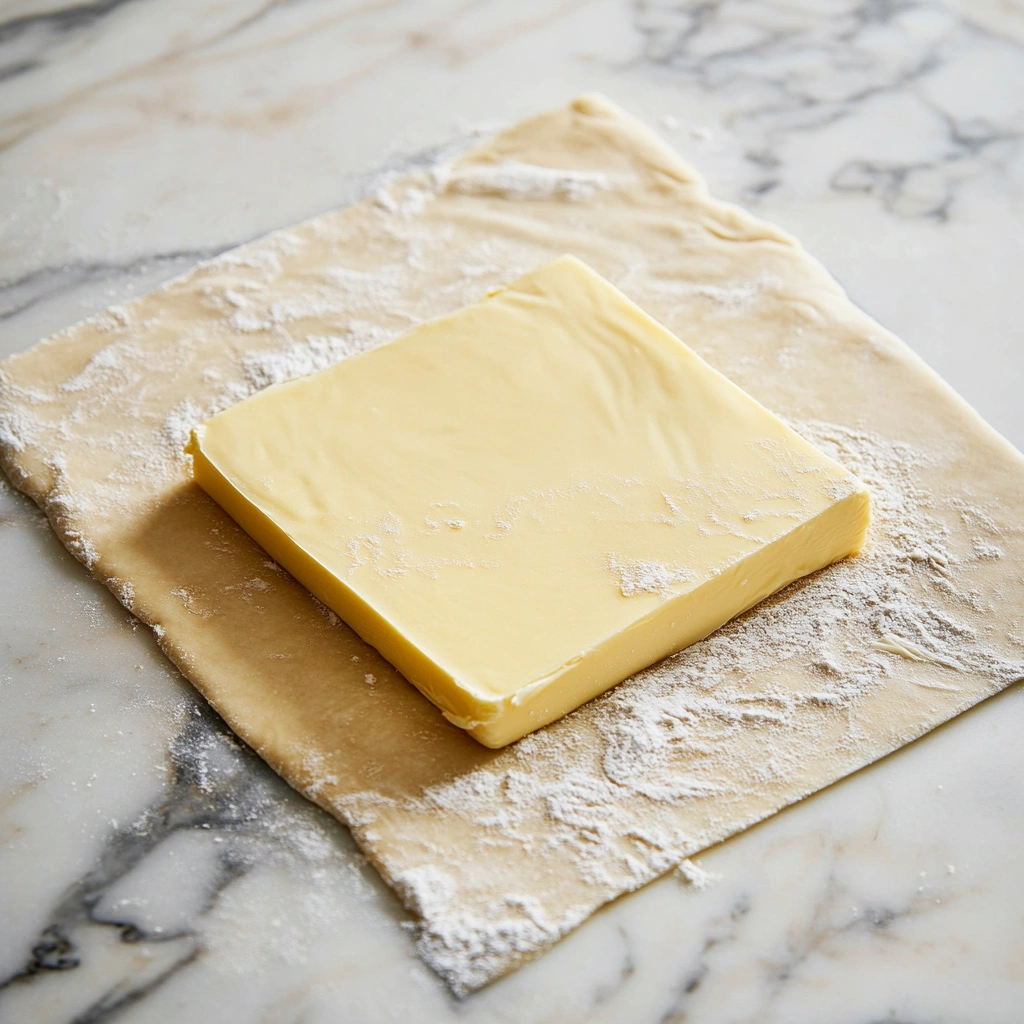
Step 2: Prepare the Butter Block
This step is key for creating those buttery layers.
- Cut Butter: Place your butter between two sheets of parchment paper.
- Flatten Butter: Use a rolling pin to flatten the butter into a rectangle about 8 inches by 5 inches. Aim for an even thickness.
- Chill Butter: Place the butter block in the fridge while the dough chills. You want it to be firm but pliable—like cold Play-Doh.
Step 3: Laminate the Dough
Here’s where the magic happens—layering butter into the dough.
- Roll Out Dough: Roll the chilled dough into a rectangle about 16 inches by 10 inches.
- Add Butter: Place the butter block in the center of the dough. Fold the dough like a letter, fully encasing the butter.
- Seal and Chill: Pinch the edges of the dough to seal in the butter. Wrap it in plastic wrap and chill for 30 minutes.
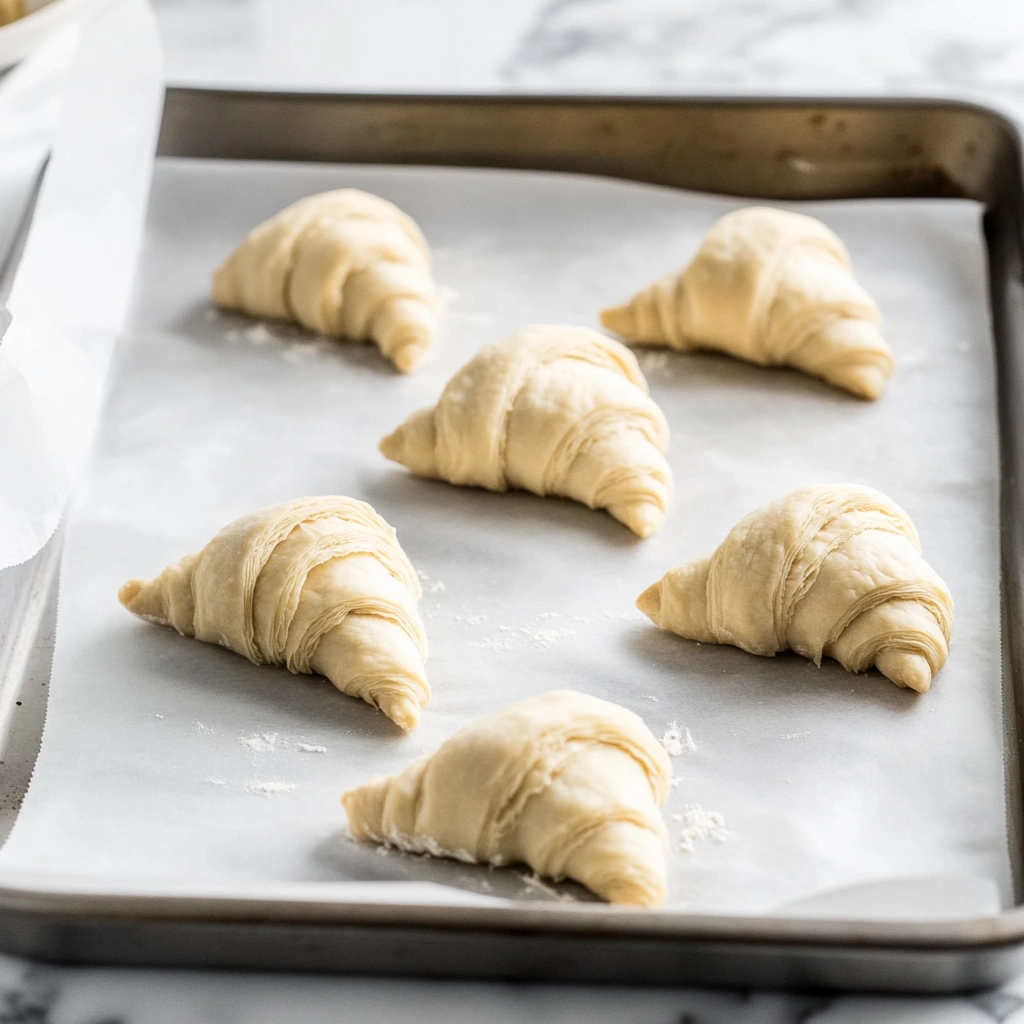
Step 4: Fold and Roll (Turn the Dough)
This process creates the signature layers in a croissant.
- First Fold: Roll the dough into a large rectangle (about 16×10 inches). Fold it into thirds like a business letter.
- Chill: Wrap the dough and refrigerate for 30 minutes.
- Second Fold: Repeat the rolling and folding process. Chill again.
- Third Fold: One last round of rolling and folding. Chill for at least 1 hour (or overnight if you have time).
Step 5: Shape the Croissants
Now it’s time to give your croissants their classic crescent shape.
- Roll Out the Dough: Roll the dough into a large rectangle, about 20 inches by 10 inches, and ¼-inch thick.
- Cut Triangles: Use a knife or pizza cutter to slice the dough into long triangles.
- Shape Croissants: Roll each triangle from the wide end to the tip, tucking the tip under the croissant. Curve the ends slightly to form a crescent.
Step 6: Proof the Croissants
Let your croissants rise before baking.
- Arrange on Baking Sheets: Place the shaped croissants on parchment-lined baking sheets, leaving space between them.
- Cover and Proof: Cover loosely with plastic wrap or a damp towel. Let them proof in a warm spot for 1–2 hours, or until they’re puffed up and jiggle slightly when moved.

Step 7: Bake
The final step is baking your croissants to golden perfection.
Cool: Let them cool for 10 minutes before devouring!
Preheat Oven: Preheat your oven to 375°F (190°C).
Egg Wash: Whisk one egg with a splash of milk or water. Brush the tops of the croissants lightly for a shiny finish.
Bake: Bake for 20–25 minutes, or until the croissants are golden brown and flaky.
FAQs About what are the ingredients in a croissant?
The process typically takes about 2–3 days, including chilling and proofing times. Don’t worry—it’s worth it.
Nope! Lamination is what gives croissants their flaky layers. Without it, you’d just have bread.
This usually happens if the dough or butter got too warm during the lamination process. Keep everything chilled to prevent this.
Yes! A stand mixer with a dough hook makes kneading much easier. Just be careful not to overwork the dough.
Conclusion
Making croissants is a beautiful blend of simplicity and skill. With just a few humble ingredients—flour, butter, yeast, milk, sugar, water, and salt—you can create something extraordinary. If you’ve ever wondered what are the ingredients in a croissant, this list covers it all! Sure, it’s a bit of a commitment (hello, chilling and folding), but the reward is so worth it.
When you finally pull those golden, flaky croissants out of the oven, you’ll understand why people are obsessed with this pastry. It’s not just about the taste (though that’s obviously a huge part of it). If you’ve ever asked yourself what are the ingredients in a croissant, you now know how each one plays a role in creating something so intricate and special from scratch.
So, whether you’re a seasoned baker or just curious about trying something new, don’t be afraid to give croissants a go. If you’ve ever wondered what are the ingredients in a croissant, this guide breaks it down step by step. Take your time, enjoy the process, and embrace the labor of love—it’s totally worth it.
Now, grab some coffee and butter up one of those beauties. Bon appétit!
Want even more delicious ideas? Check out our Pinterest page for mouthwatering recipes and kitchen tips!

